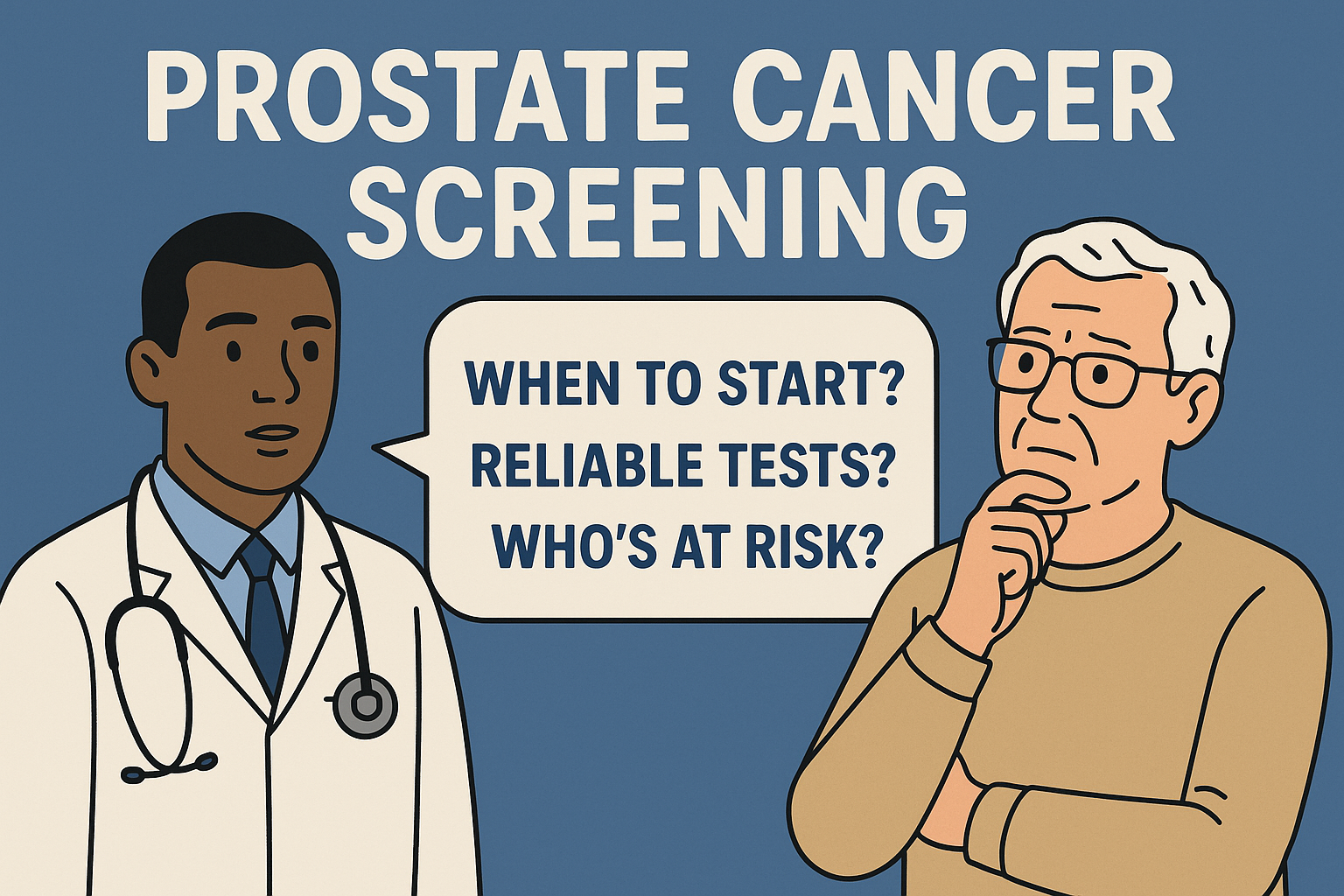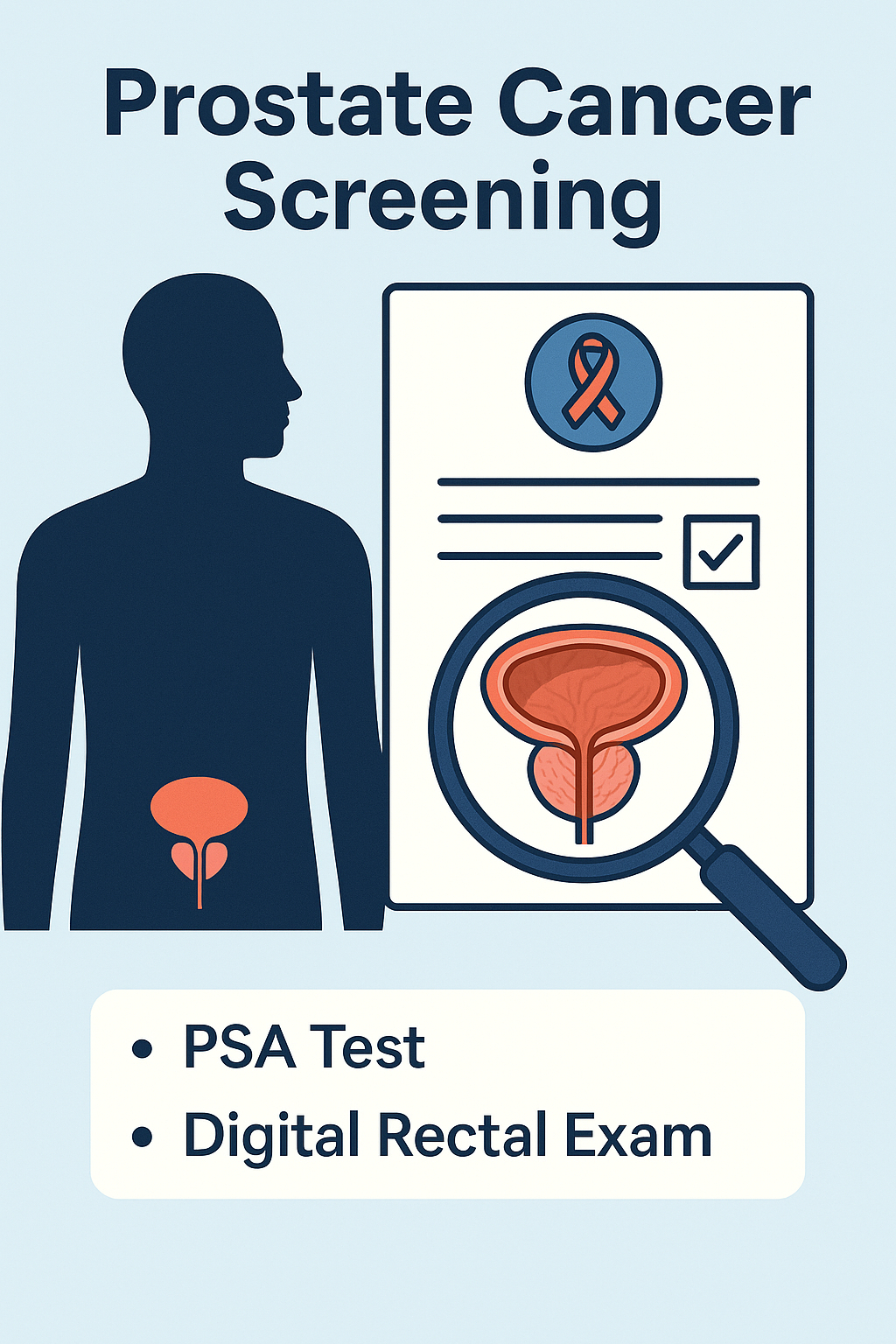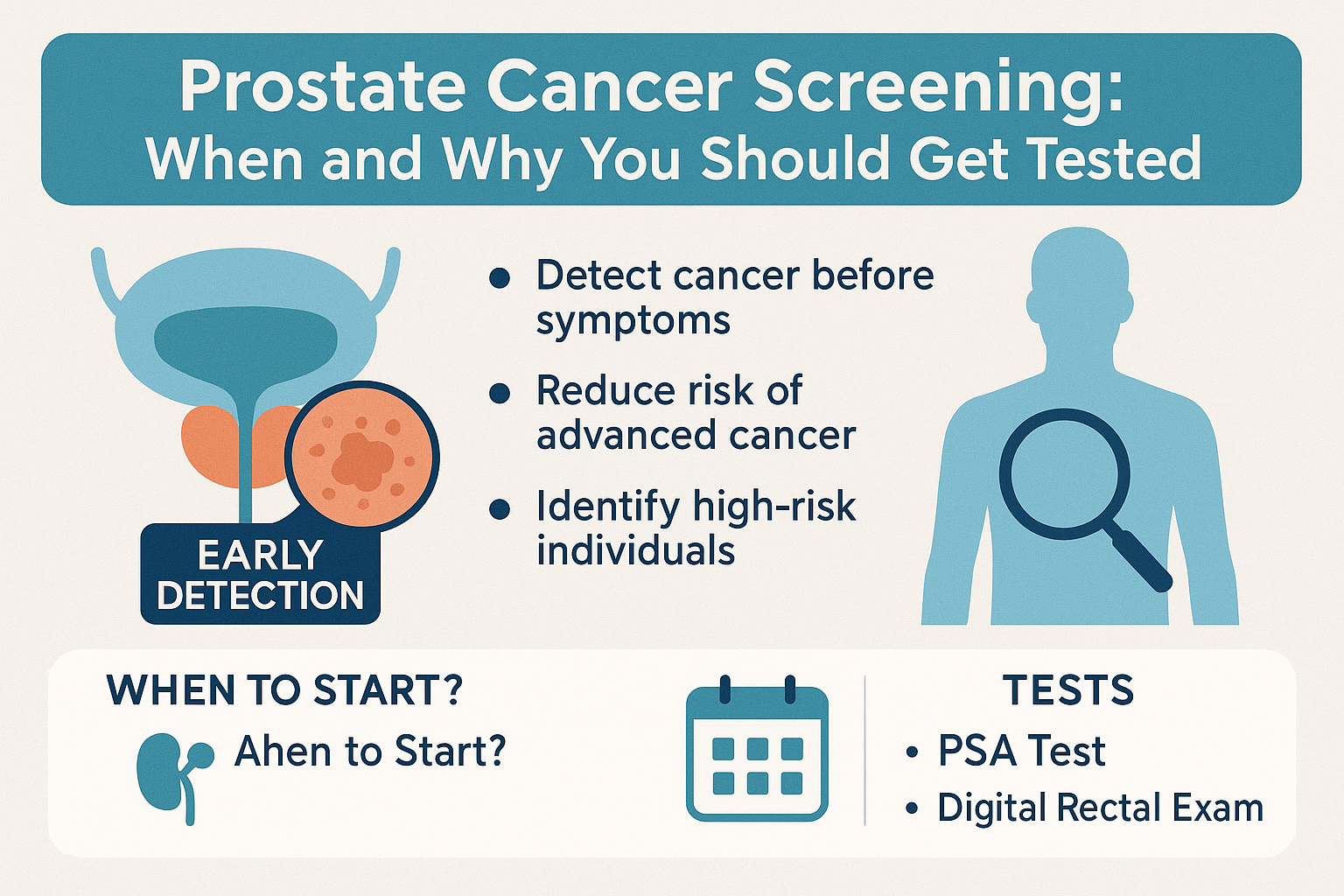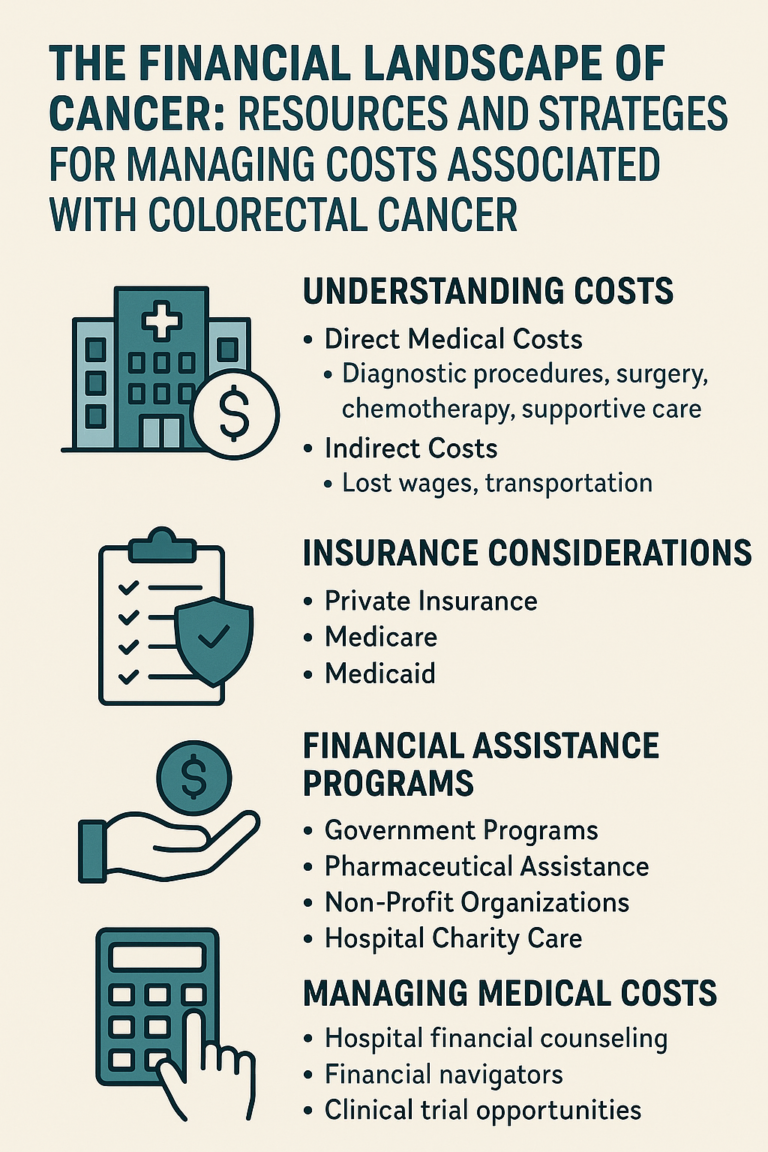Book Appointment Now

Prostate Cancer Screening: When and Why You Should Get Tested
Introduction
Prostate cancer is one of the most common cancers in men, but the good news is that early detection can save lives. The key to catching prostate cancer early is screening, which helps identify the disease before symptoms appear. But when should you start screening? Which tests are the most reliable? And who is most at risk? In this article, we’ll cover everything you need to know about prostate cancer screening, including the best time to get tested and why early detection matters.
What Is Prostate Cancer Screening?
Screening for prostate cancer involves testing healthy men for signs of the disease before they have symptoms. The goal is to:
Detect cancer early, when it’s easiest to treat.
Reduce the risk of advanced prostate cancer.
Identify high-risk individuals who may need more frequent monitoring.
Screening does not diagnose cancer, but it helps determine if further testing is needed.

Who Should Get Screened for Prostate Cancer?
Prostate cancer screening frequency depends on both baseline risk and PSA levels. Here’s a simplified guide:
Low-Risk Men
(No family history, no major risk factors)
- Start screening at age 50.
- PSA < 2.5 ng/mL: Repeat every 2–4 years.
- PSA 2.5–4 ng/mL: Repeat annually.
- PSA ≥4 ng/mL: Refer for MRI/biopsy.
High-Risk Men
(Family history, African American men)
- Start screening at age 45.
- PSA < 1 ng/mL: Repeat every 2 years.
- PSA 1–3 ng/mL: Repeat annually.
- PSA ≥3 ng/mL: Investigate with MRI or biopsy.
Very High-Risk Men
(BRCA1/BRCA2 mutations, multiple relatives with prostate cancer)
- Start screening at age 40.
- PSA < 1 ng/mL: Repeat every 2–3 years.
- PSA ≥1 ng/mL: Monitor every 6–12 months, depending on trajectory.
Key Considerations for PSA Screening Intervals
- Confirmatory Testing: Always repeat an elevated PSA test within 4–6 weeks to rule out transient causes (e.g., infection, vigorous exercise).
- PSA Velocity: A rapid rise in PSA (e.g., >0.75 ng/mL/year) may warrant closer monitoring, even if absolute PSA is low.
- Age Adjustments:
- Men >70 with stable PSA (<4 ng/mL) and no symptoms may stop screening after shared decision-making.
- Younger men with rising PSA need aggressive follow-up.
Types of Prostate Cancer Screening Tests

There are two main tests used to screen for prostate cancer:
1. PSA Test (Prostate-Specific Antigen Blood Test)
The PSA test measures the level of prostate-specific antigen (PSA) in the blood. High PSA levels can indicate:
- Prostate cancer
- Benign prostatic hyperplasia (BPH) – enlarged prostate
- Prostatitis – prostate inflammation
What is a normal PSA level?
Below 4 ng/mL – Generally considered normal.
4–10 ng/mL – “Gray zone,” may require further tests.
Above 10 ng/mL – Higher risk of prostate cancer, biopsy may be needed.
Important:
Some men with low PSA levels can still have prostate cancer.
High PSA doesn’t always mean cancer—it can be caused by other conditions.
2. Digital Rectal Exam (DRE)
A doctor manually examines the prostate through the rectum to check for lumps or abnormalities.
It’s a quick and simple test, used alongside PSA testing for better accuracy.
It is less effective alone, but useful for detecting aggressive cancers.

What Happens If Screening Shows a High PSA?
If your PSA level is high or if your DRE shows abnormalities, the next steps may include:
Repeating the PSA test – Some factors (like infections) can temporarily raise PSA levels.
MRI Scan – Helps identify if cancer is present before doing a biopsy.
Prostate Biopsy – A small sample of prostate tissue is taken and tested for cancer cells.
Pros and Cons of Prostate Cancer Screening
Benefits:
- Detects cancer early, increasing the chances of successful treatment.
- Can catch aggressive cancers before they spread.
- Newer tests help reduce unnecessary biopsies.
Risks and Limitations:
- Can lead to overdiagnosis—some prostate cancers grow so slowly they may never cause harm.
- False positives can lead to anxiety and unnecessary procedures.
- PSA levels can fluctuate due to infections, medications, or even recent ejaculation.
Key Takeaway: The decision to screen should be made based on your personal risk factors and discussions with your doctor.
What’s New in Prostate Cancer Screening?
Advancements in screening are reducing false positives and unnecessary biopsies.
1. PSA Density and PSA Velocity
PSA Density – Measures PSA levels relative to prostate size (helps reduce false alarms).
PSA Velocity – Tracks how quickly PSA levels change over time (faster rise may indicate cancer).
2. MRI-Guided Screening
High-resolution MRI scans are now being used to detect high-risk prostate cancers before doing a biopsy.
Helps avoid unnecessary biopsies in men with borderline PSA levels.
3. Liquid Biopsy & Genetic Testing
Tests like SelectMDx and ExoDx can detect cancer-related DNA markers in urine or blood.
More precise than PSA alone in predicting aggressive cancer.
Should You Get Screened? The Final Verdict
If you’re 50+ (or younger with risk factors), talk to your doctor about screening.
PSA testing + DRE remains the standard, but newer tests help improve accuracy.
Screening isn’t perfect, but it can save lives by catching aggressive prostate cancer early.
Key Takeaways:
Start screening at age 50 (or earlier if high risk).
PSA test + DRE is the first step—MRI or biopsy may follow if needed.
Screening can reduce prostate cancer deaths, but risks should be considered.
Newer, more accurate tests are making screening better than ever.




